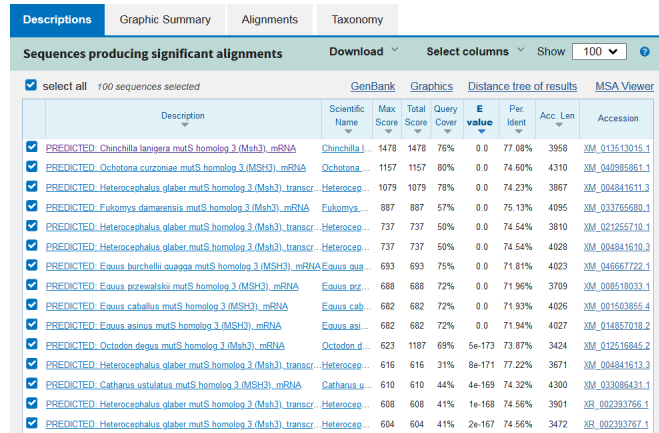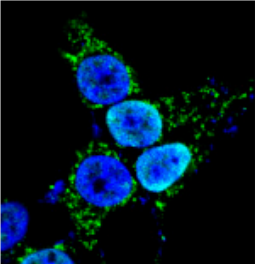 ow that Covid is but a distant memory, much like the slogan “The
most trusted name in news,” it's time to reveal the truth: everything
we told you about Covid was wrong. The spike protein in SARS-CoV-2 really
does nuke the immune system. The virus really can get reverse-transcribed
into your DNA (at least in cultured liver cells.[1]) Lockdowns
only reduce infection by a few percent, masks barely work, and the virus
really could have been made in a lab.
ow that Covid is but a distant memory, much like the slogan “The
most trusted name in news,” it's time to reveal the truth: everything
we told you about Covid was wrong. The spike protein in SARS-CoV-2 really
does nuke the immune system. The virus really can get reverse-transcribed
into your DNA (at least in cultured liver cells.[1]) Lockdowns
only reduce infection by a few percent, masks barely work, and the virus
really could have been made in a lab.
Let's focus on two of these claims: the latest “bombshell” on the lab origin theory and the finding that SARS-CoV-2 damages your DNA.
Son of Frankenstein theory
Was SARS-CoV-2 made in the lab? Last week some researchers claimed [2] to have run a BLAST search on the furin cleavage site (PRRA) of the SARS-CoV-2 spike protein. This four-amino-acid insert isn't found in any other betacoronaviruses, and it's been a mystery how it got there. The authors say the reverse (antisense) sequence of the 19-base stretch around PRRA was identical—a 100% match—to something Moderna patented (US9587003B2, sequence Seq ID 11652, nt 2751–2733), called MSH3, three years earlier. They estimated the probability that this occurred naturally to be one in 33 billion (p = 3×10−11, not 33 trillion as reported elsewhere).
Forward sequence
CTC CTC GGC GGG CAC GTA G Reverse sequence
CTA CGT GCC CGC CGA GGA G
MSH3 (part of the MutS beta complex) is a DNA mismatch repair protein. Infection of human cells expressing MSH3 by a SARS-like virus could enable copy choice recombination, which is when the new DNA molecule replicates in such a way that it alternates between the correct and incorrect template molecule. This would enable the virus to acquire a new insert such as PRRA. If PRRA somehow made its way into SARS-CoV-2 without deliberate engineering, one way would be by a recombination event in SARS-CoV-2 infected human cells overexpressing the MSH3 gene.
I spent two hours trying to verify the claim, but was unable to find either the forward or reverse sequence, the term 11652, or the term MSH3 in the BLAST printout or in Patent US9587003B2. The closest was a mention of MSH2, a related protein, on page 86. Not finding things in a patent is not necessarily determinative, as some patents have extra data files that require a fee to view. Nevertheless, native human MSH3 does not have a PRRA, PRR, or RRA sequence or any significant part of the forward or reverse 19 base pair sequence claimed in the paper. A BLAST search of either the forward or reverse DNA sequences claimed in the paper returned no human sequences. I even ran the forward and reverse sequences against MSH3 DNA in a dot plot to check for alignments with gaps. Nothing.
A commenter on the journal's website claims that hundreds of matches turn up on NCBI's BLAST, implying that the the sequence is common and therefore the findings are meaningless. This is not so: the BLAST search on this sequence pulls up only bacteria sequences—which are not relevant—and the authors specifically stated that they did not find it in any eukaryotic or viral sequences (bacteria are prokaryotes, not eukaryotes). NCBI's website is about what you'd expect for a government computer system: it times out and stops accepting input randomly, but eventually you get a result. Excluding SARS-CoV-2, SARS-CoV, and all bacteria, we end up with only one perfect match: a predicted sequence of NACHT and WD containing protein 1 from Aotus nancymaae, a night monkey found in Brazil and Peru. A dead end.
Thus, both the paper and the critiques of it have major flaws. Maybe the authors could tell us exactly where in the patent this sequence is. If it's true, maybe we can nail the WIV for patent infringement.
Update (Mar 15 2022)
Another blogger found the sequence. Kudos to him or her! It is in the supplementary data of the patent, searchable at http://seqdata.uspto.gov/?pageRequest=docDetail&DocID=US09587003B2. From there, sequence 11652 can be found in a search and yields the artificial sequence discussed in the paper.
The artificial sequence is 77% identical to mutS homolog 3 (Msh3) in several mammalian species including chinchilla, plateau pika, naked mole rat, and zebra:

Blast search of Moderna's artificial gene showing 77% identity with chinchilla Msh3
The sequences are 84% identical (16/19) in the suspect region, shown in yellow below. This is not statistically different from the % identity in the rest of the sequence (p=0.59). If Moderna started with Msh3 (which is virtually certain, given the E value of 0.0 in the table), the probability that they would have created the SARS-Cov-2 insert by chance is 4−3 or 1 in 64. This is a lot less suspicious than the one in three billion claimed by the authors or the one in three trillion claimed by the UK Daily Mail.

Similarity of Moderna's artificial gene with chinchilla Msh3. Antisense 19-base furin cleavage site in SARS-CoV-2 is highlighted in yellow
Since this is a reverse sequence, it would not produce the PRRA furin cleavage site. It looks to me like a nothingburger. I would bet Moderna didn't even notice it, but who knows.
Patents are full of junk put there by the corporate lawyers. I'd venture to say that most scientists, even in industry, neither know nor care what's in them.
Young Frankenstein Immunodeficiency Syndrome
Covid basically nukes the immune system. Patients with Covid-19 show delayed and weak immune responses. They have fewer T cells, fewer helper T cells, and fewer suppressor T cells. They also have delayed IgG and IgM antibody levels. This might explain the brain fog and long-term symptoms. But the question has always been: how is Covid doing it?
Viruses can kill cells by causing host cell replication stress, which means the cell is so busy manufacturing viruses it runs out of raw materials and dies. Or, because the virus puts the cell in overdrive, the cell can run out of oxygen and die. But SARS-CoV-2 seems to act by inhibiting DNA repair, specifically non-homologous end joining (NHEJ) and homologous recombination (HR).[3] This means when a DNA molecule gets damaged, say by a chemical or X-ray, it doesn't get repaired. It also means that the V(D)J mechanism, which is a DNA splicing system essential for making antibodies, gets screwed up. To make antibodies, DNA has to be cut, spliced, and repaired. Without DNA repair, the B cells cannot make a good antibody and they die.
What is weird is that this only happens with the full-length spike protein. The spike S1 and S2 subunits have no effect. S1 and S2 are produced by proteolytic cleavage, which is essential for viral infection. Ironically, the Pfizer and Moderna vaccines are specifically designed to be un-cleavable, so cells in a vaxxed patient have high levels of un-cleaved spike protein. High levels are also found after severe infection, after they're synthesized on ribosomes.
The authors say this could explain why severe COVID patients have an inadequate immune response. It could also explain why vaccines against the RBD (receptor-binding domain) work better than the full-length spike mRNA vaccines. Of course, many studies have found that infection and vaccines can produce an antibody response. So it appears that in mild cases the level of spike protein is not high enough to block the adaptive immune system entirely.

Spike protein in nucleus from Fig. 1A in Jiang et al. [3]. The blue is DAPI, which stains for cell nuclei. The green is Spike protein. Cyan colored areas show where spike is found in the nucleus
It's too early to say whether injecting people with un-cleavable spike mRNA could create future problems for vaccine recipients. Indeed, you might think that DNA repair happens in the nucleus, while SARS-CoV-2 is expressed in the cytosol, so it's not a problem. But several SARS-CoV-2 proteins including Nsp1, Nsp5, Nsp9, Nsp13, Nsp14, and Nsp16, get to the nucleus during infection, where they inhibit the interferon response. The authors found that spike protein is also highly abundant in the nucleus (see figure at right).
Limitations of the study are that it was done in cultured HEK-293T cells, and that the concentration to reduce NHEJ by half was listed as about 1000 ng. Given the MW of spike to be 25 kDa and assuming the volume was 1 ml, this means the concentration would be around 40 nM, a level easily achieved. The authors found convincing biochemical evidence that DNA damage was increased, including increased γH2AX (a marker of DNA breakage) and visible DNA smearing in the Comet assay. They say the spike protein works by hindering the recruitment of the DNA repair proteins BRCA1 and 53BP1. DNA repair is a very complicated process requiring many proteins to be ‘recruited’ to sites of damage by special sensor proteins which monitor the DNA for damage, so if even one of the required proteins isn't recruited to the right place, repair won't happen.
The Curse of Covidstein
Failure to repair DNA causes cancer, and blocking DNA repair is a classic strategy in cancer therapy [4]. Drugs that inhibit DNA repair are given to patients, after which the patient is given radiation treatment or treatment with an anticancer drug such as cisplatin or doxorubicin. These treatments damage the DNA. If the cell is unable to repair it, the cell tries to undergo apoptosis, a process of tidying up and getting rid of its DNA before the cell dies. If that fails, which can happen in cancer cells when key enzymes such as p53, p53 binding protein, or DNA-PKcs are mutated or inhibited, a catastrophic release of damaged DNA and other cell components occurs, causing widespread inflammation.
Cancer often returns in patients treated with anti-cancer drugs because damaging the wrong piece of DNA sends the cell once again on an inexorable course toward becoming malignant.
One prediction from this is that SARS-CoV-2 patients may be at higher risk for cancer as well as opportunistic infections, much as AIDS patients are. Another is that the mRNA vaccine, which is designed to express large amounts of spike protein, urgently needs to be re-designed to prevent this. Scientists should also take a more careful look at molnupiravir. Avoiding DNA damage ought to be a high priority for any therapy.
1. Aldén M, Falla FO, Yang D, Barghouth M, Luan C, Rasmussen M, De Marinis Y (2022). Intracellular Reverse Transcription of Pfizer BioNTech COVID-19 mRNA Vaccine BNT162b2 In Vitro in Human Liver Cell Line. Curr. Issues Molec. Biol. 2022, 44, 1115–1126. https://doi.org/10.3390/cimb44030073 Link
2. Ambati BK, Varshney A, Lundstrom K, Palú G, Uhal BD, Uversky VN, Brufsky AM (2022). MSH3 Homology and Potential Recombination Link to SARS-CoV-2 Furin Cleavage Site. Front. Virol, 21 Feb 2022. https://www.frontiersin.org/articles/10.3389/fviro.2022.834808/full (no longer listed in Pubmed)
3. Jiang H, Mei YF. SARS-CoV-2 Spike Impairs DNA Damage Repair and Inhibits V(D)J Recombination In Vitro. Viruses. 2021 Oct 13;13(10):2056. doi: 10.3390/v13102056. PMID: 34696485; PMCID: PMC8538446.
4. Cheung-Ong K, Giaever G, Nislow C. DNA-damaging agents in cancer chemotherapy: serendipity and chemical biology. Chem Biol. 2013 May 23;20(5):648-59. doi: 10.1016/j.chembiol.2013.04.007. PMID: 23706631.
mar 06 2022, 8:35 am. updated mar 15 2022, 5:02 am
